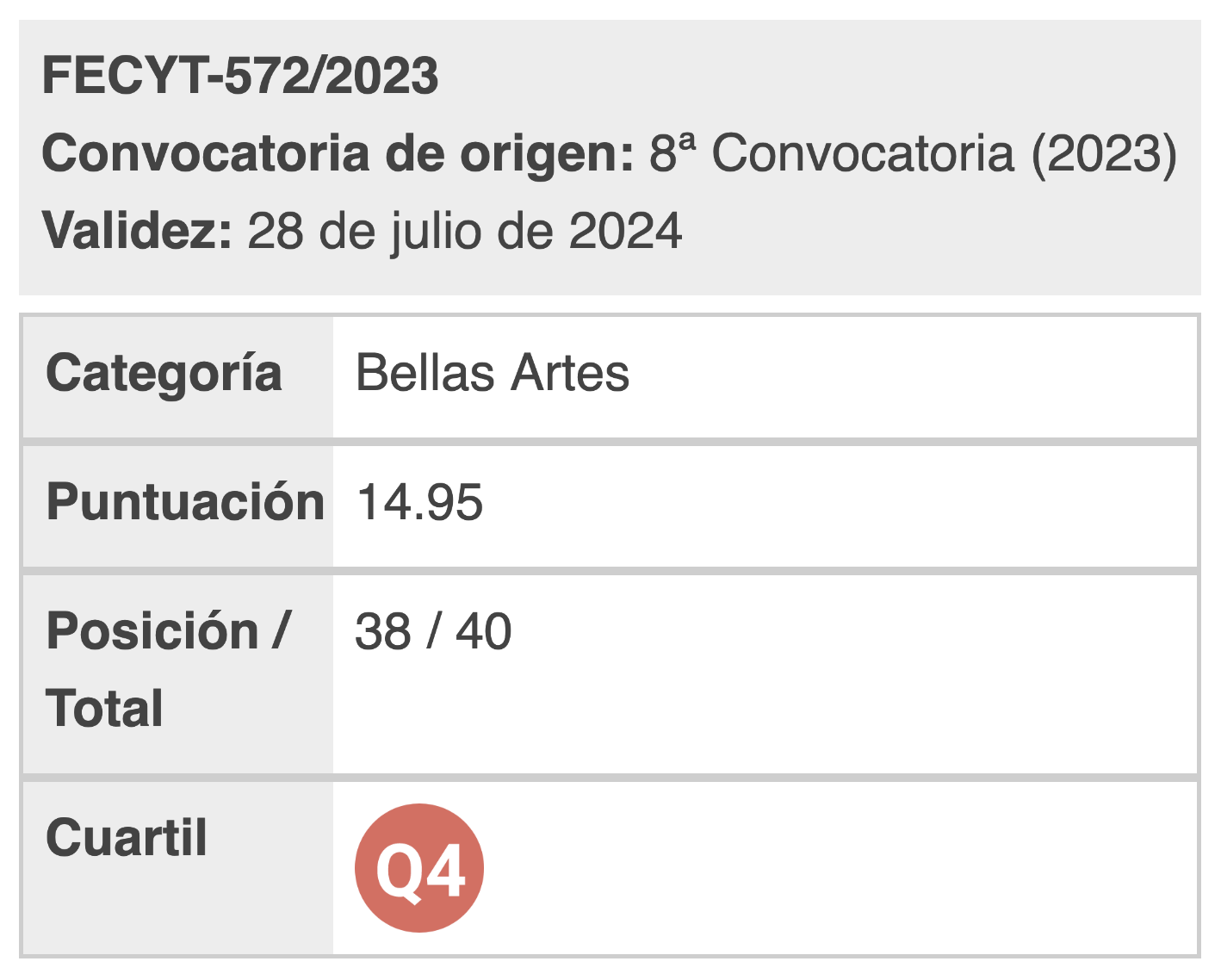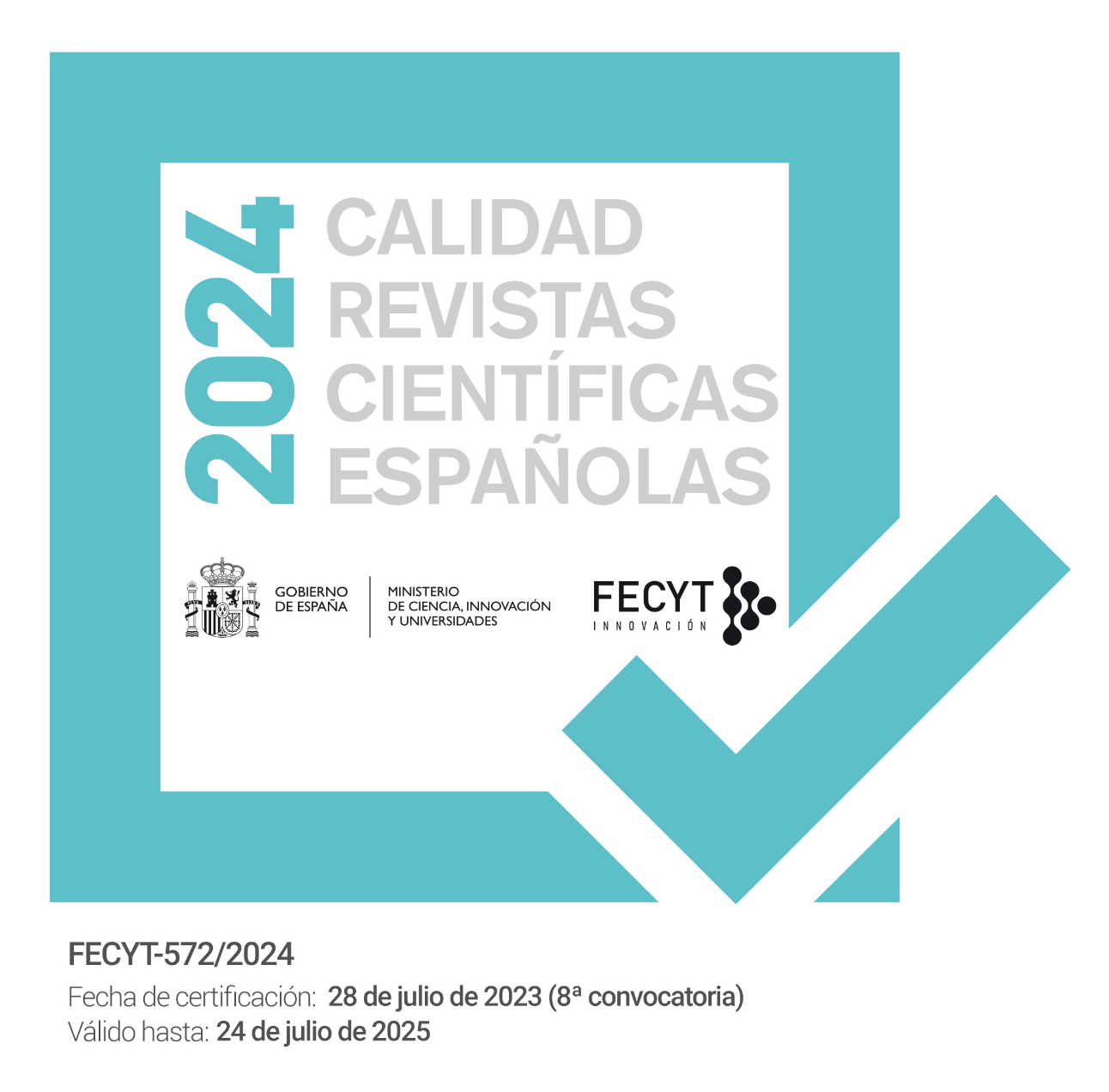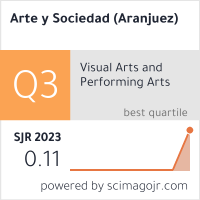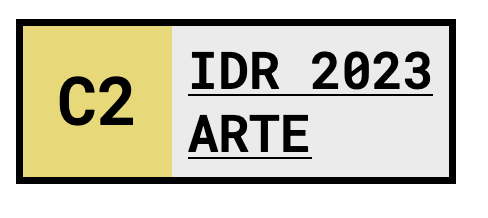Eros. Fragment and Presence
DOI:
https://doi.org/10.5281/zenodo.7650448Keywords:
Eros, Virtuality, Time, poetry, wordAbstract
This paper proposes a poetic reflection of the experience of eros in the virtual environment. It is built from words, gestures, and imagination, inhabiting a space in which all times converge.
References
Bader, M. J. (2002). Arousal: The secret logic of sexual fantasies. St. Martin’s Press.
Barthes, R. (1994). El susurro del lenguaje. Más allá de la palabra y la escritura. Paidós.
________. (2008). Fragmentos de un discurso amoroso. Siglo XXI.
Bauman, Z. (2005). Amor líquido. Acerca de la fragilidad de los vínculos humanos. Fondo de Cultura Económica.
Ben- Ze’ev, A. (2004). Love online: emotions on the Internet. Universidad de Cambridge.
___________. (2017) Ben-Ze’ev, A. (2017). Virtual Relationships, Love, and Sex in Cyberspace. En J. Petrik y A. Zucker (Eds.), Philosophy of Sex and Love (pp. 1-39). Macmillan.
Brand, S. (1987). The media lab: Inventing the futures at MIT. Viking.
Cadenas, R. (2009). Selected poems. Bid&co.
Calame, (2002). Eros en la Grecia Antigua. Akal.
Carson, A. (2015). Eros el dulce-amargo. Fiordo.
Clark, H. (1996). Using Language. Universidad de Cambridge.
Daigneault, G. (1999). For a Spatiotemporal Sensitivity. En R. Ascott (Ed.), Reframing
Consciousness. Art, Mind and Technology (pp. 119-122). Intellect.
Deleuze, G. (1996). L’actuel et le virtuel. En Dialogues (pp. 179-185). Flammarion.
Dodds, E. (1997). Los griegos y lo irracional. Alianza.
Dreyfus, H. (2008). On the Internet. Routledge.
Fink, J. (1999). Cyberseduction: reality in the age of psychotechnology. Prometheus Books.
Foucault, M. (2018). El pensamiento del afuera. En Otro mundo, otra vida. Acirrema.
Gubern, R. (2000). El eros electrónico. Taurus.
Han, B. (2014). La agonía del Eros. Herder.
Held, R. y Durlach, N. (1992). Telepresence. Presence, vol. 1, 109–11.
Illouz, E. (2012). Why love hurts? Polity.
Juan de la Cruz (1983). Poesía completa. Oveja negra.
Kay, A. (1984). Computer Software. Scientific American. 251(3), 52–59.
Kellerman, A. (2002). The Internet on earth: A geography of information. Wiley.
Laurel, B. (2014). Computers as Theatre. Addison-Wesley.
Lévy, P. (1999). ¿Qué es lo virtual? Paidós.
Marion, J. (2005). El fenómeno erótico. Ediciones Literales.
Marín-Casanova, J. (2007). La doble realidad. En C. Moreno, R.Lorenzo y A. de Mingo (eds.) Filosofía y realidad virtual (pp. 59-76). Prensas Universitarias de Zaragoza.
Nussbaum, M. (1995). El conocimiento del amor. Estudios de Filosofìa. 11, 169-198.
Paz, O. (1972). El arco y la lira. Fondo de Cultura Económica.
____. (1994). La llama doble. Amor y erotismo. Seix Barral.
Pallasmaa, J. (1996). The Eyes of the Skin. Academy Group Ltd
Pantin, Y. (2014). País. Poesía reunida (1981-2011). Editorial Pre-Textos.
Reyes. A. (1983). La experiencia literaria. Fondo de Cultura Económica
Rheingold, H. (1994). Realidad virtual. Gedisa.
Rodríguez Adrados, F. (1995). Sociedad, amor y poesía en la Grecia Antigua. Alianza Editorial.
Valéry, P. (2008). Teoría poética y estética. La balsa de Medusa.

Published
How to Cite
Issue
Section
License

This work is licensed under a Creative Commons Attribution 4.0 International License.
You are free to:
Share — copy and redistribute the material in any medium or format.
Adapt — remix, transform, and build on the material for any purpose, including commercial.
Attribution — You must properly acknowledge the authorship, provide a link to the license, and indicate if any changes have been made.
You may do so in any reasonable manner, but not in any way that suggests that you endorse or receive any endorsement by the licensor for your use.
No additional restrictions — You may not apply legal terms or technological measures that legally restrict you from doing what the license allows.



























